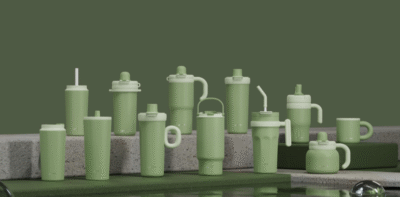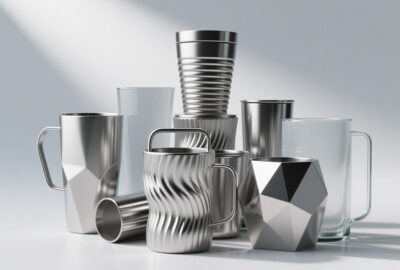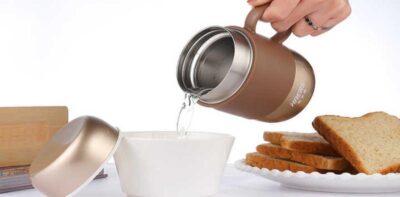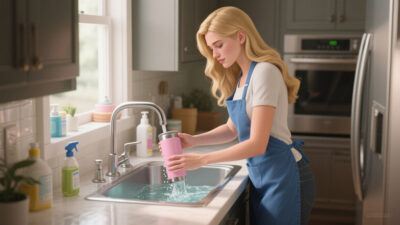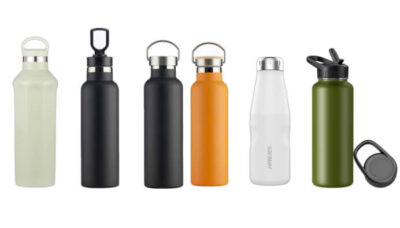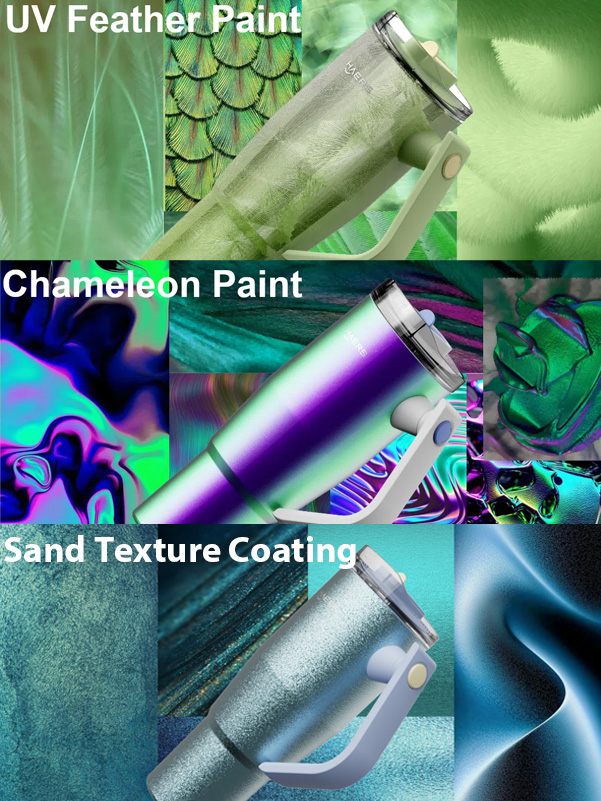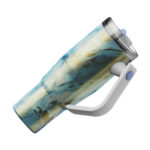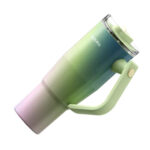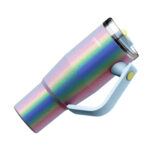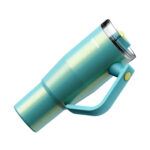How to sterilize a thermo?
Your thermo might look clean on the outside, but inside it can quietly harbor bacteria, odors, and mineral buildup from daily use. Whether you’re filling it with coffee, tea, soup, or plain water, residues can accumulate over time—especially in hard-to-reach corners like the lid or the narrow neck.
Without regular sterilization, these invisible leftovers can lead to unpleasant smells, strange tastes, or even potential health risks. Worse, if your thermo isn’t cleaned properly, it can shorten the product’s lifespan by encouraging mold growth or internal corrosion.
Sterilizing your thermo regularly not only ensures that every sip stays fresh and safe but also helps you maintain the performance and longevity of your investment—especially for stainless steel thermoses designed to keep drinks hot or cold for hours.
Table of Contents
TogglePrep Before You Sterilize
Before jumping into sterilization, it’s important to know exactly what your thermo is made of. Most high-quality thermoses use 304 or 316 stainless steel for the inner wall—both are food-grade materials that can safely handle hot water and most disinfecting agents. However, always double-check your manufacturer’s label or product manual to avoid damaging any coatings or components.
Next, take apart all removable parts: this includes the lid, silicone sealing rings, straws, or spouts. These small components are often made from different materials such as plastic, Tritan™, or stainless steel, and each may require a slightly different cleaning method. For example:
Plastic or Tritan parts are more sensitive to high heat, so it’s best to sterilize them using warm soapy water or a diluted vinegar solution.
Stainless steel parts can handle boiling water or steam for more thorough disinfection.
Taking the time to prepare your thermo properly ensures a deeper, safer clean—and prevents damage to any part of the cup.
Effective Ways to Sterilize the Body
Once everything is disassembled and ready, itโ€s time to sanitize the thermobody. Here are a few simple yet effective methods that are safe for stainless steel:
Hot Water Rinse (Best for Daily Cleaning)
The easiest and most convenient method is simply filling your thermo with boiling water and letting it sit for 5-10 minutes. This helps kill most common bacteria and is gentle enough for everyday use. Just make sure to empty and air-dry the bottle completely afterward to prevent moisture buildup.
Baking Soda + Hot Water Solution
Add 1-2 teaspoons of baking soda into the thermos, then pour in hot (not boiling) water until it’s full. Close the lid loosely and let it sit for 15-30 minutes. Baking soda is a natural deodorizer and works great for removing lingering smells or mild stains. After soaking, scrub with a soft brush if needed, rinse thoroughly, and let dry.
White Vinegar or Citric Acid Wash
If you notice water scale, cloudy stains, or persistent odors, white vinegar or citric acid can help. Pour in a 1:3 mixture of vinegar to water (or use a small spoon of citric acid powder with warm water), shake gently, and let it soak for 30 minutes to an hour. This acidic solution helps break down mineral deposits and kills bacteria without damaging the stainless steel interior.
Each of these methods is safe for 304/316 stainless steel and can be rotated weekly or monthly, depending on how frequently you use your thermos.
Don’t Forget the Small Parts
While the thermobody gets most of the attention, it’s often the small parts—like the lid, silicone rings, or straws—that hide the most bacteria and mold. Here’s how to clean them effectively and safely:
Use a toothbrush for lids and silicone rings
Gently remove the silicone seal from the lid and scrub both parts using a soft toothbrush with warm soapy water. These areas often trap moisture and residue, especially if the thermo is used for coffee, tea, or flavored drinks.
Clean spouts and straws with a narrow brush
If your thermohas a built-in straw, spout, or removable drinking nozzle—especially plastic ones—use a special straw brush to reach deep inside. This helps remove buildup that’s invisible to the eye but could cause odor or contamination over time.
Avoid harsh tools or chemicals
Never use steel wool, strong acid-based cleaners, or bleach, as these can scratch stainless steel, damage protective coatings, or degrade rubber and plastic components. Always opt for soft brushes and food-safe cleaning agents.
Keeping these small parts clean is essential for maintaining the overall hygiene of your thermo and ensuring that every sip stays fresh and safe.
Tips for Wholesalers
For wholesalers and gift-oriented buyers, sterilization isn’t just about hygiene—it’s also an opportunity to add value and enhance customer satisfaction. When bulk customizing tumblers for resale, gifting, or promotional use, here are a few practical suggestions:
Include a care instruction card
Adding a small instruction leaflet that explains how to clean and sterilize the thermo can help end users take better care of their bottles. Clear guidance builds trust and reduces post-sale service issues.
Bundle with cleaning accessories
For corporate gifts or high-end promotional sets, consider including extras like a straw brush or a small packet of baking soda. These small, low-cost additions instantly boost perceived value and show attention to detail.
Highlight safety and easy-clean features
Use packaging or marketing materials to emphasize that the thermos is made with food-grade 304 or 316 stainless steel, and is designed for easy cleaning. These points matter to health-conscious customers and can serve as key selling advantages.
For large-volume bulk wholesale water bottle orders, professional manufacturers like us at Haers can provide end-to-end service: not only producing and customizing the water bottles, but also assisting in the custom packaging process. We can help pre-pack each unit with your branded care cards, cleaning tools, or other inserts—ensuring every product that reaches your customer is complete, informative, and ready to use.



